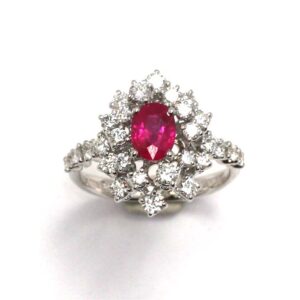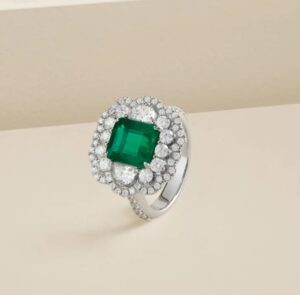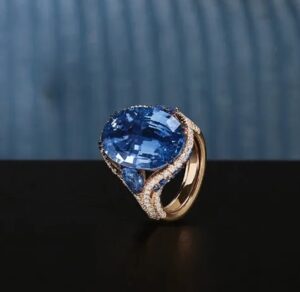Emerald is a precious stone that is appreciated all over the world for its beauty and value. It is a variety of beryl that comes in different shades of green, from light green to deep dark green.
The history of the emerald dates back thousands of years, when it was mined from Egyptian mines and prized by ancient cultures for its beauty and symbolic meaning. Over the centuries, the emerald has been owned by royalty, nobles and celebrities from all over the world, such as Queen Cleopatra, who owned several.
Today, emerald is mainly used in jewelry to create rings, earrings, necklaces and other accessories. It is prized for its beauty, exotic appeal and symbolic meaning, often representing hope, peace and rebirth.
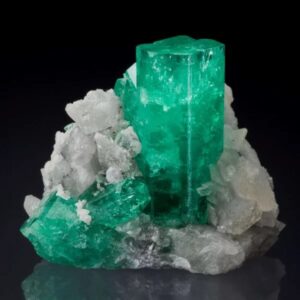
Rough stone
Typically, emerald forms in sedimentary rock deposits, where the beryl is exposed to high pressures and temperatures. Its green color is due to the presence of chromium and vanadium during the stone formation process.
Deposits
Emerald is found in different parts of the world, including Colombia, Brazil, Zambia and Zimbabwe. The most important mines are located in the Colombian region of Muzo, where some of the most beautiful and sought after emeralds in the world are mined.
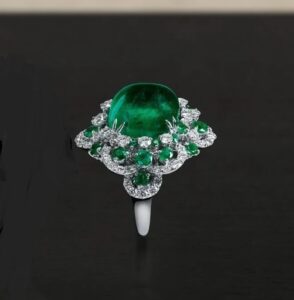
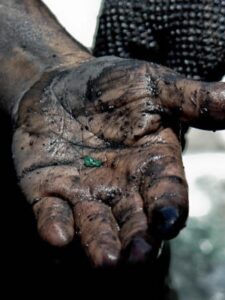
Color
The emerald has a glassy sheen and a bright, deep green color. Its color can vary from light green to dark green, with shades ranging from yellow to blue. Emeralds with a deep, uniform green color are the rarest and most expensive, while stones that are lighter in color or have inclusions can be less expensive.
Cut
Beryl is often cut so that there is a flat face at the top of the stone (known as the table) and a series of facets cut at the bottom (known as the emerald cut). This type of cut is often used to bring out the deep green color of the emerald and to enhance its luster.
Furthermore, it can be cut into different shapes to create unique and personalized jewellery. Some of the more common shapes include the oval cut, square cut, teardrop cut, and round cut.



Features
Unlike diamond, emerald is not very hard, with a hardness of 7.5-8 on the Mohs scale, making it more delicate and less resistant to scratching. Also, inclusions are common and accepted, unless they are too obvious or destructive to the gem.
Treatments
Emeralds often undergo treatments to improve their appearance and quality, but it is important to note that these treatments can affect the value of the stone. Here are some of the more common treatments:
Cedar Oil: This is a common practice to enhance the transparency and clarity of an emerald. Cedarwood oil is injected into the stone to reduce the appearance of any inclusions and improve luster.
Resin: In some cases, a clear resin is used to fill the cracks and pits within an emerald, enhancing its appearance and strength. However, this treatment may be less stable than cedar oil and may require periodic maintenance.
Heating: This treatment can improve the clarity and color of an emerald. During the heating process, the stone is exposed to high temperatures to remove any inclusions and enhance its luster.
Color treatments: Sometimes emeralds undergo chemical treatments to change their color. For example, yellow or pale green beryl can be used, which is exposed to chemicals to give a deeper green color.
It is important to note that some of these treatments are not permanent and may lessen over time. It is therefore important to find out about its origin and quality before buying it.
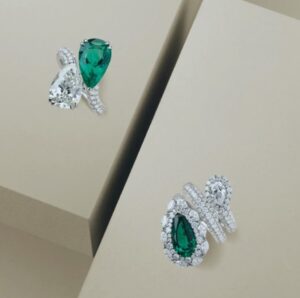
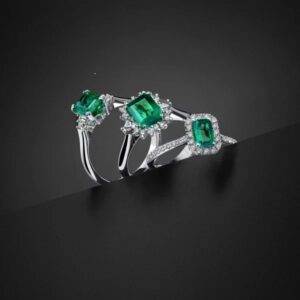
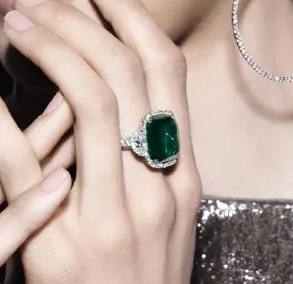
Cure
Emerald is a gemstone highly prized for its unique beauty and rarity. However, precisely because it is a soft and fragile stone, it requires special care to preserve its appearance and beauty. Here are some practical tips to keep your emerald jewel at its best:
- Avoid exposing the emerald to harsh chemicals, such as household cleaners, cosmetics and perfumes. These products can dull or damage the stone.
- Avoid exposing the emerald to extreme heat sources, such as direct sun or a sauna. The stone may dry out and become brittle.
- Avoid wearing your emerald jewelry during strenuous physical activity, such as swimming or sports. Friction and impact can cause scratches and cracks in the stone’s surface.
- Clean your emerald jewelry regularly using warm water and a mild detergent. Rinse well and dry gently with a soft cloth.
In addition, it is important to have your emerald jewelry checked regularly by a professional. An expert can check if the stone has been damaged or dulled and recommend any cleaning or repairs.
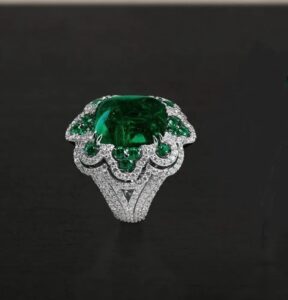
At our specialized laboratory, you will find professionals who are expert in the care of emerald jewels. We carry out checks and technical verifications, cleaning and repairs to preserve the appearance and beauty of your jewel.
In conclusion, to keep your emerald jewelery looking its best and shining like new, follow the care advice described above and don’t forget to have your jewelery checked regularly by a professional. Contact us for a quality service and to preserve the beauty of your jewel in the long term.
